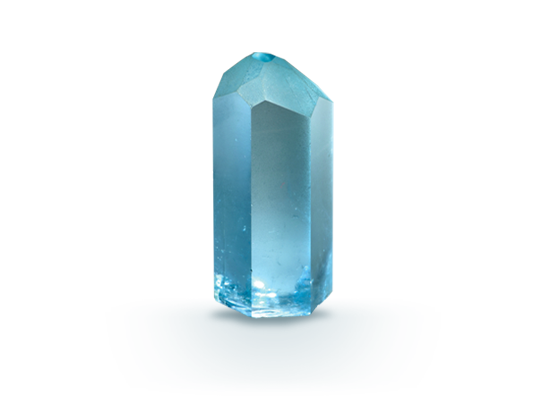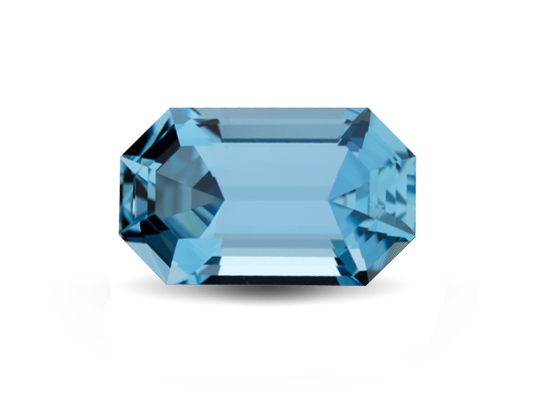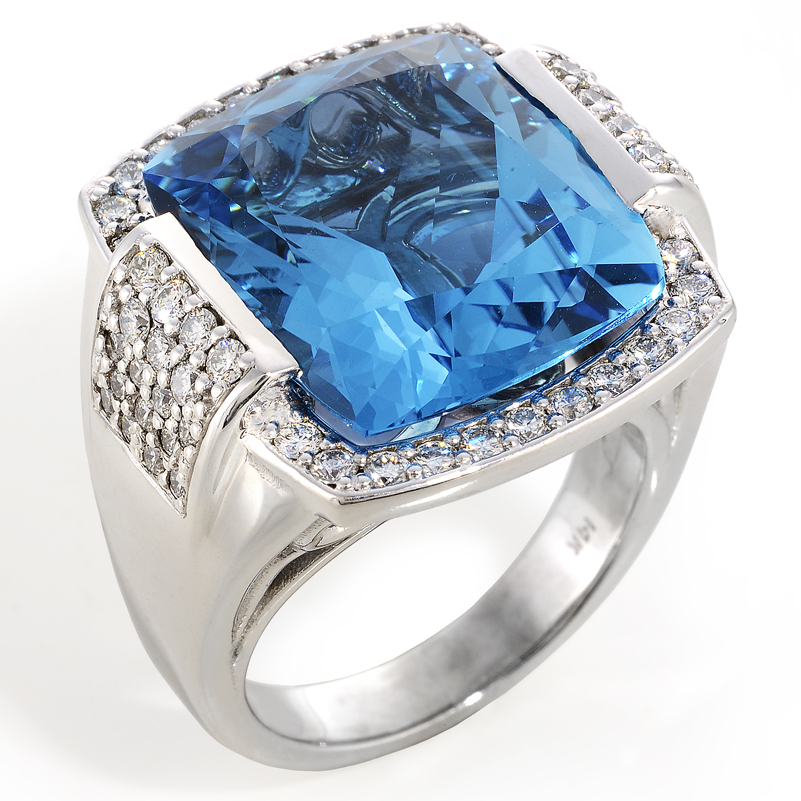Aquamarine’s very name is taken from two Latin words; aqua (water) and marina (of the sea) together translating to “seawater”. March’s birthstone conjures up mental pictures of the crystal clear blue tint of the sea. Aquamarine is commonly found in light pastel greenish blues, as cool as a plunge into a refreshing pool. Its most popular hue, however, is a vivid blue reminiscent of the ocean’s calm. Aquamarine and emerald are both color varieties of the beryl mineral family. While emerald is more familiar and popular, aquamarine has garnered its own reputation for beauty.
If you’re looking for another reason to acquire aquamarine jewelry, it’s also known as a gem for celebrating the 19th wedding anniversary
History and Lore
One legend says Neptune, the King of the Sea, gave aquamarine as gifts to the mermaids. Another legend maintains aquamarine originated in the treasure chests of fabulous mermaids. Either way, aquamarine was reputed to keep sailors safe, guard against storms and bring hope, health, harmony, happiness and love to all who owned it. For centuries, aquamarine was the constant companion of mariners, keeping sailors safe by calming waves and protecting them against the wrath of the sea.
Aquamarine also reflects the fresh, young-at-heart qualities of those who wear it. It’s alleged to reawaken love, kindle friendships and elevate the spirit. Aquamarine was long thought to have a soothing influence on married couples, enhancing the happiness of their marriages.
Use in Jewelry Today
Aquamarine has been among the top selling colored gemstones for a number of years. In the recent past, demand for aquamarine even temporarily surpassed emerald. With an expressive color evocative of both sea and sky, aquamarine is considered a fashion staple. It’s a rare gemstone which can effortlessly move from day to night, work to play, and casual to elegant.
Because of its predominantly pastel tones, jewelry set with aquamarine tends to be light and bright. Adding to its popularity is aquamarine’s ability to stand out whether set in white or yellow metal. Yellow enhances the warmth of a greenish stone, while white metal highlights its cool blue hues.
Aquamarine gemstones can be found in large sizes and unconventional shapes, making it a perfect candidate for specialty jewelry design. Given the generous availability of rough aquamarine, there is no limit to a lapidary’s creativity. A reasonable supply of fine and extra fine quality material also exists, especially in smaller sizes.
As the March birthstone and a favorite of water-signs, aquamarine is well-suited for building a jewelry collection. It can be added to year after year and milestone after milestone. Aquamarine is resilient enough for frequent wear but to look its best, aquamarine should be cleaned frequently. We recommend a single, safe method for cleaning all your gemstone jewelry. A gentle solution of warm water and gentle dish detergent safely cleans aquamarine jewelry. For additional details, please read our blog Cleaning Fine Gemstone Jewelry. To learn about caring for your fine jewelry, please read our blog Caring For Fine Gemstone Jewelry.
Color Characteristics and Treatments
Aquamarine’s color description is very specific. As the name suggests, greenish blue to blue-green colors generally light in tone define aquamarine. Aquamarine’s color can be quite intense in larger sizes, while it is often less vivid in smaller ones. It is nearly impossible to see darker blues in aquamarine.
The most sought after aquamarine gemstones combine high clarity and saturated blue to slightly greenish blue color which trend toward medium tones. Differences in shade and depth of color affect its value. A medium blue gemstone void of inclusions is considered most valuable.
Aquamarine is routinely treated to create a highly desirable, pure blue color. Heat treatment changes aquamarine’s color by removing yellow components. Gentle application of heat for several hours changes a once-greenish gemstone to the purer pastel blue more typical of aquamarine in today’s market. The result is permanent and widely accepted in the jewelry industry. You can learn about treatments the gemstones we use in our jewelry might receive in our blog Gemstone Treatments/Enhancements Explained.
Formation, Mining and Cutting
Gem quality aquamarine is mined in a number of locations. Brazil has been a major source since the beginning of the 19th century. Pakistan produces large amounts of aquamarine along with other beryl varieties, some of which are mined at high elevations, around 15,000 feet, in the Karakorum Mountains. African countries, primarily Mozambique, Nigeria, Zambia, Tanzania, Kenya and Madagascar are also significant producers. China is known for small, commercial quality material in large quantities. Russia, Sri Lanka and Vietnam contribute lesser quantities. More recently, stunning aquamarine crystals were discovered in Afghanistan.
Most gem quality aquamarine forms in pegmatite rock as large, well-formed and beautiful six-sided crystals. Eye clean material is common. Typical inclusions are long, fine tubes and two-phase inclusions sometimes accompanied by solid inclusions such as mica, tourmaline and even hessonite garnet.

 Crystals are
sometimes big enough to cut fashioned gemstones of more than 100 carats or to
create carvings. On rare occasions, aquamarine crystals can grow to be more than a foot long, making them particularly
valuable to collectors of mineral specimens. The largest gem-quality aquamarine
crystal mined to date is 19 inches long.
Crystals are
sometimes big enough to cut fashioned gemstones of more than 100 carats or to
create carvings. On rare occasions, aquamarine crystals can grow to be more than a foot long, making them particularly
valuable to collectors of mineral specimens. The largest gem-quality aquamarine
crystal mined to date is 19 inches long.
Aquamarine gemstones are commonly cut in elongated shapes, such as rectangular emerald or brilliant cuts. These cuts best utilize the long hexagonal form in which the crystals grow in nature. Aquamarine quite frequently has a flawless or lightly included interior and is often cut with large step facets and an open table that show off the remarkable purity of its structure. Because of its pastel character and superior transparency, aquamarine sparkles with brilliance no matter how it’s faceted.

Aquamarine gemstone photo Courtesy of GIA
While 100 East Fine Jewelry does not currently offer any jewelry items containing fine aquamarine gemstones, we do have similarly colored blue topaz jewelry pieces. The blue topaz and diamond ring shown below that I designed gives an idea of how the stones compare. Click the link to browse the current 100 East Fine Jewelry Blue Topaz Collection.

Credit Gemological Institute of America, American Gem Trade Association and Gemworld International. Credit Gemological Institute of America for aquamarine crystal photo.

